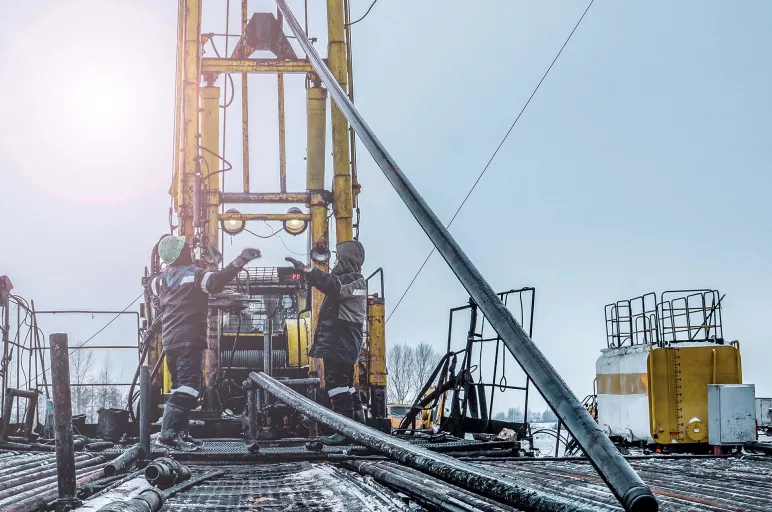
5 Trends Reshaping Procurement in Oil and Gas
- Managing disruptions and volatility is critical for oil and gas procurement resilience.
- Supply chain visibility and risk mitigation capabilities are growing in importance.
- New technologies like Gen AI can drive efficiency improvements in oil and gas procurement.
March 07, 2024 | Procurement Strategy
Oil and gas companies face an uncertain future amid the global energy transition. While demand projections vary, new technologies and sustainability pressures are clearly reshaping industry strategies and operations. This disruption creates risks but also opportunities to upgrade performance.
Procurement sits at the center of this transformation.
By harnessing emerging trends, procurement organizations can drive greater value and become strategic advisors that enable competitiveness.
Here are five key trends reshaping procurement for oil and gas service providers:
1. Enterprise-Wide Cost Focus
With volatile oil prices, structural cost competitiveness is paramount. This requires moving from siloed unit-level cost savings toward enterprise-wide optimization. Cross-functional coordination between procurement, operations and finance teams enables better capital allocation and economizing of scale.
Centralized category management , shared services, unified technology platforms, and data integration provide the foundations for enterprise cost optimization. With industry change accelerating, agility in adapting spending to dynamic market conditions will separate outperformers.
2. Sustainability and Circular Economy
Sustainable procurement in the oil & gas industry involves incorporating environmental, social, and governance (ESG) criteria into purchasing decisions to minimize negative impacts and promote positive outcomes.
Key use cases include prioritizing eco-friendly materials and energy-efficient equipment, assessing suppliers on sustainability practices like carbon footprints and labor policies, investing in renewable energy sources like solar/wind power; optimizing logistics for lower emissions; procuring sustainable water technologies and services; local sourcing to support communities; enabling circular economy practices like recycling; engaging suppliers that contribute to social programs; implementing supply chain transparency and traceability systems; and ensuring compliance with sustainability standards.
3. Risk Management Evolution
From trade wars to sanctions, climate impacts and cyber threats, supply chain risks are intensifying. Disruptions can halt operations, incurring substantial costs. Resilience is now an operational and shareholder priority.
Leading procurement teams use analytics to detect concentration risks, map tier 2 and tier 3 suppliers, and develop mitigation plans.
Enhancing visibility across fragmented supply chains is vital. Risk management strategies include dual sourcing, stockpiling, expanding supplier networks and scenario planning. Agility, flexibility and redundancy have become essential procurement capabilities.
4. Generative AI Integration
Generative AI has significant potential to enhance procurement efficiency and innovation in the oil and gas industry through automated document processing, data-driven supplier selection, market forecasting, and more.
Specific use cases include extracting data from purchase orders and contracts; evaluating suppliers using performance metrics; leveraging market trends and supply chain dynamics to inform procurement strategies ; creating customized, compliant contracts and identifying cost savings opportunities from spend patterns.
5. Service Model Innovation
Specialist services from seismic imaging to drilling waste management are crucial for safe, efficient operations. Yet service costs have ballooned over the past decade. Digital co-innovation with services partners is creating new solutions from remote operations to automated analytics. Performance-based contracting better aligns incentives around output metrics like production improvement. Data transparency and integration allows continuous performance optimization.
Conclusion
The trends remaking oil and gas present risks but also opportunities to transform procurement.
Procurement in the oil and gas industry is fraught with challenges unique to its complex, high-stakes, and rapidly changing environment. Addressing these challenges requires more than a one-size-fits-all approach; it demands solutions specifically tailored to the sector's needs.
By leveraging advanced procurement software and strategies designed with the oil and gas industry in mind, companies can navigate these challenges effectively.
The result is not just enhanced efficiency, cost savings, risk management, and sustainability but also a stronger competitive position in the global marketplace.
As the industry continues to evolve, embracing these tailored procurement solutions will be key to thriving in an increasingly complex and competitive sector.



